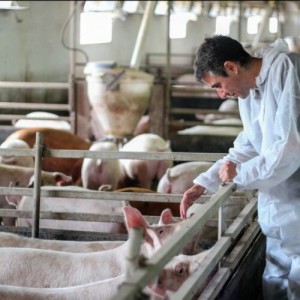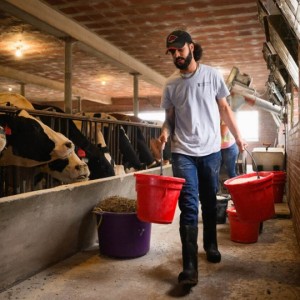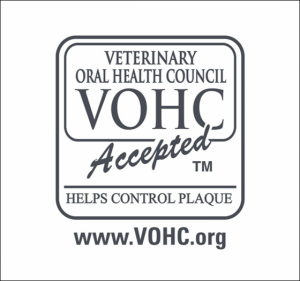New Guidelines for Animal Use in Veterinary Education
When animals are used in veterinary education, students can better understand and develop fundamental concepts, such as anatomy, physical examination, diagnostic imaging, and clinical skills. However, veterinary teaching institutions must consider the ethics and morals that protect the animals’ welfare, and seek alternatives when possible.
In October 2022, the American Association of Veterinary Medical Colleges (AAVMC) published a two-page document to guide AAVMC member schools toward improving their animal use policies and use of animal alternatives. The publication included recommendations such as an annual review of the institution’s animal and cadaver use policies, ensuring the use is guided by the four R’s (i.e., replacement, reduction, refinement, and respect), and using alternatives to replace non-essential animal use where appropriate.
The AAVMC then recognized the need for a more detailed explanation on implementing the original guide’s recommendations and recently published the AAVMC Use of Animals in Veterinary Education Handbook.
Veterinary cadaver acquisition and use
The handbook’s first section provides institutions with recommendations for the use of cadavers and cadaver parts. Specific guidelines include:
- Implementing respectful methods of cadaver acquisition
- Establishing policies to audit and evaluate cadaver use
- Responsibly and ethically sourcing cadavers
- Using alternative instructional models and technology when possible to meet learning objectives
The handbook covers the implementation of a willed body program (WBP) as one method to ethically source cadavers. These programs promote reverence for all life and the belief that no animal should be euthanized solely for the sake of veterinary education. A veterinary WBP’s main goals are to advocate for the ethical treatment of animals in academic use and instill the animal’s life with added purpose after death. These programs also promote collaboration and partnership with veterinary professionals and the local community. The handbook details how veterinary institutions can develop and implement a WBP in their unique settings and includes topics such as setting standards for accepted animals, identifying specimens, storing and embalming specimens, return policies, memorial services, advertising, and developing student ethics.
The handbook also advocates for alternative instructional models when they can be effective in meeting learning objectives. Schematic drawings can augment anatomy education, and plasticine layered on natural bone can create a reusable 3D model as an alternative to cadaver dissection. More high-fidelity educational alternatives are also available, such as:
- Veterinary simulators (e.g., haptic cow)
- Digital 3D reconstructions of anatomical structures
- Virtual reality veterinary anatomy programs (e.g., QuickTime Virtual Reality)
- 3D software dissection programs (e.g., Biosphera, Sciencein3D, Anatomage)
- Artificial intelligence (AI) platforms and systems integrations
Using live animals in veterinary education
Using live animals in veterinary education has many benefits, including overcoming cadaveric limitations, providing parallel learning and repetition opportunities, and improving new graduate outcomes. The handbook details the use of small animals, large animals, and zoological and exotic species in veterinary education.
Points covered for small animal use include:
- Establishing committees to manage small animals in teaching and ensure their welfare
- Considerations for using dogs owned by faculty, staff, students, and clients
- Considerations for using colony dogs owned by the institution
- Planning for using small animals in the curriculum
The section on large animal use covers considerations for university- and privately-owned animals and recommends that institutions decide whether to use animals for a specific procedure based on:
- The procedure’s invasiveness
- The potential that the procedure will cause the animal fear, anxiety, distress, discomfort, pain, and/or medical risk
- If medication can reduce any potential fear, anxiety, distress, discomfort, pain, and/or medical risk to the animal
- How long the animal would take to recover from the procedure and/or the medication
The chapter on zoological and exotic species details considerations for using small mammals, avian species, ectotherms, free-ranging wildlife, and non-domestic animals in managed care.
Using models as alternatives to live animals in veterinary education
The handbook also includes an extensive section about using models as live animal alternatives and selecting the most appropriate models. Model types discussed include:
- Models for core skills — Core skills, such as handling sharps, drawing up drugs, instrument handling, knot tying, basic suture patterns, laboratory diagnostics, and applying bandages, can be mastered using a generic model.
- Small animal models — Many skills, such as muzzling a dog, conducting a physical examination, and determining the best position for an ophthalmoscopic examination, can be learned using a small animal model. Many sophisticated small animal models that support skill development in areas such as anesthesia, resuscitation, surgery, dentistry, ultrasound, and laparoscopy, are available commercially.
- Equine models — Horse models can prepare veterinary students for handling animals and basic technical skills, such as halter placement, limb bandaging, venipuncture, intramuscular injection, perineural analgesia of the lower limb and ocular blocks, abdominocentesis, rectal palpation, shoe removal, and dental floating.
- Farm animal models — Farm animal models are used mostly to help students learn how to rectally palpate cows for pregnancy diagnosis and fertility examination.
- Rodent models — Rat and mice models are available to help students develop skills such as handling, ear tagging, microchip placement, endotracheal intubation, blood collection, injections, oral medication administration, oral examination, intravenous catheter placement, and rectal thermometer placement.














List
Add
Please enter a comment